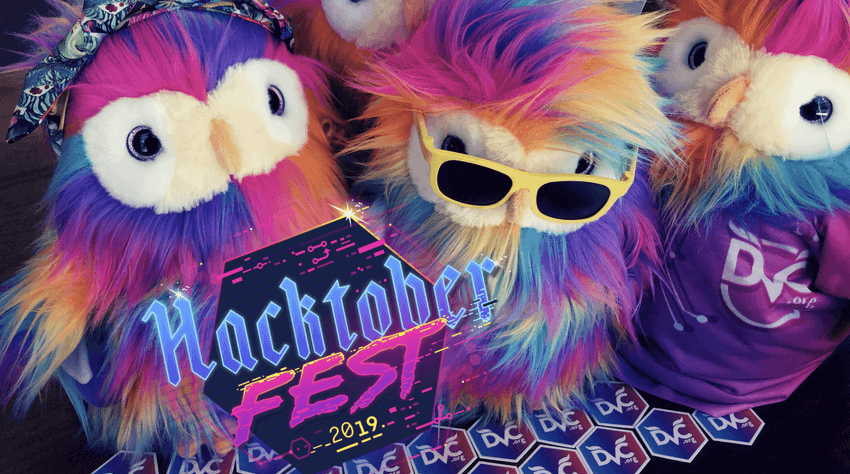DVC.org for Hacktoberfest 2019
Our favorite month of the year Hacktoberfest is already in full swing and we at DVC.org are so excited to be a part of it!

Hacktoberfest is a monthly-long program that celebrates open source and encourages you to contribute to open source projects (and rewards you with stickers and a cool T-shirt!). Whether you’re a seasoned contributor or looking for projects to contribute to for the first time, you’re welcome to participate!
It is the 6th season of Hacktoberfest and the 2d year of participating for DVC.org team. We really enjoyed it in 2018 and this year we are upping the game with our own cool stickers, special edition T-shirts and a collection of carefully picked tickets.
How to participate?
If you haven’t started your Hacktoberfest challenge yet, it is just the right time, you have 3 weeks left to submit PRs and get your swag! Here are some important details:
-
Hacktoberfest is open to everyone in the global community.
-
You can sign up anytime between October 1 and October 31. Make sure to sign up on the official Hacktoberfest website for your PRs to count.
-
To get a shirt, you must make 4 legit pull requests (PRs) between October 1–31 in any time zone.
-
Pull requests can be made in any public GitHub-hosted repositories/projects, not just the ones highlighted.
And the special addition from DVC.org team:
-
Look through the list of DVC Hacktoberfest tickets or the list of good DVC first issues.
-
Make a PR to DVC and get our stickers.
-
Close three issues for DVC and get a special DVC T-shirt.
Why contribute to DVC?
DVC (Data Version Control) is a relatively young open source project. It was started in late 2017 by a data scientist and an engineer to fill in the gaps in the ML processes tooling. Nowadays DVC is growing pretty fast and though our in-house team is quite small, we have to thank our contributors (more than 100 in both code and docs) for developing DVC with us.
DVC is participating in Hacktoberfest for 2 years in a row to bring more people into open source, to learn from them and to give back by sharing our own experience. This year we decided to focus on a single important topic for us — improving UI/UX.
As our contributors and maintainers were sifting through the feature requests, bugs, and improvements to create a good list of Hacktoberfest tickets, we noticed that UI/UX label on Github is popping up again and again. DVC is a command line tool, and improving UI/UX in our case means making decisions on how to name command options, where and when to use confirmation prompts and/or where abort execution, what exactly user would expect to see in the output, how to test it later, etc.
Why improving UI/UX appears to be so important for DVC at this stage? Perhaps because the project is more mature now and we are ready to spend more time on polishing it. Or maybe because it is still too-engineering focused and we used to disregard/de-prioritize all this ‘fancy’ stuff. Or it is because we just lack experience in creating good CLI UI/UX!
One or another, those are great reasons to focus on improving UI (in a broader sense than just GUI), improving docs, creating powerful consistent experience for our users and increasing accessibility of DVC.
That’s how Heroku’s CLI style guide starts:
Heroku CLI plugins should provide a clear user experience, targeted primarily for human readability and usability, which delights the user, while at the same time supporting advanced users and output formats. This article provides a clear direction for designing delightful CLI plugins.
At DVC we are building user experience in line with these principles too, but we also have our own challenges. And here we turn for help to the global open source community and all the contributors out there.
For all of us who have a heart for open source — let’s discuss, contribute, learn, take the technologies forward and build something great together!
Happy hacking!
We are happy to hear from you here. Our DMs on Twitter are always open, too!
